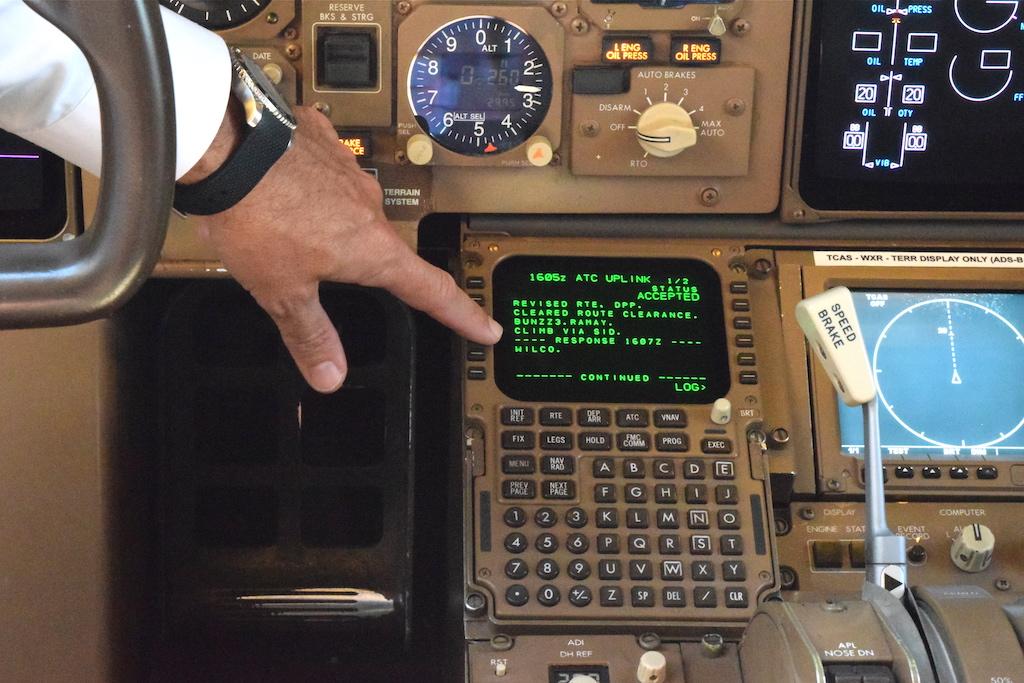
After being slowed by the COVID-19 pandemic, the FAA could complete the nationwide deployment of data messaging capability between controllers and pilots by the end of 2022, the NBAA reports. The association is encouraging business aviation operators to review recently approved procedures made available on-line by L3Harris Technologies, the FAA’s Data Communications (Data Comm) program prime contractor.
Data Comm Background
Data Comm is a core program of the FAA’s NextGen air traffic control modernization effort. The messaging capability complements voice communications between pilots and controllers, helping to improve safety by reducing readback/hearback errors, control instructions intended for one aircraft taken by another aircraft and transposed call signs. Instructions can be quickly loaded into an aircraft’s flight management system upon acceptance by the pilot.
The FAA awarded Harris Corp. (now L3Harris Technologies) the original contract to implement domestic controller-pilot data link communications (CPDLC) in 2012, beginning with airport towers, where controllers use the system to send departure clearances. The program completed the deployment to 62 airport towers in 2018, culminating with Van Nuys Airport (VNY) in California.
Under Data Comm’s current phase, the FAA planned to provision 20 air route traffic control centers that manage high-altitude, en route traffic by this year, but the effort has been slowed by testing and personnel restrictions caused by the pandemic and avionics compatibility issues. L3Harris, the FAA and manufacturers have worked to resolve “lower-than-expected transmission success rates” that temporarily prevented many general aviation aircraft from participating in Data Comm trials, according to the NBAA.
Data Comm uses Future Air Navigation System (FANS) 1/A protocol CPDLC messages, sent over VHF Data Link Mode 2 (VDL2) radios. L3Harris reports that more than 5,900 air transport, business and general aviation aircraft are equipped for data communications.
Resources For Operators
- FAA Advisory Circular (AC) 90-117 provides an overview of data link communication operations for U.S. domestic operations and in oceanic and remote continental airspace.
- L3Harris Technologies provides a portal of Data Comm information, with links to required and recommended avionics, guidance for pilots and demonstration videos at: https://www.l3harris.com/datacomm
The portal contains the following notice for general and business aviation use of U.S. domestic en route CPDLC:
“U.S. Domestic En Route CPDLC is currently allowing the return of certain business and general aviation aircraft whose avionics configurations meet those listed in the U.S. Domestic En Route CPDLC Avionics Trial document. Please use the Verification of Avionics Configurations in conjunction with the U.S. Domestic En Route CPDLC Avionics Trial document listed under Data Comm Resources. These document(s) contain language regarding the current status of business and general aviation in En Route CPDLC, how to check your aircraft for eligibility and how to apply to have your aircraft added to the ‘Return to Service’ list for En Route CPDLC if you meet the eligibility requirements.
“For aircraft configurations not listed, operators are requested to temporarily stop filing as eligible for En Route CPDLC, and contact their equipment manufacturer to work with the FAA and L3Harris to evaluate operational performance of their aircraft configuration (this activity has already begun with major business aviation manufacturers). Aircraft configurations that can demonstrate consistent operational performance will be added to the Data Comm Recommended Avionics Versions document to resume En Route operations. Operators may continue to file for DCL service only with the appropriate flight plan filing DAT code.” DAT/ (other data application) codes identify if a flight is receiving CPDLC or PDC (Pre-Departure Clearance) service.
The guidance is supported by FAA Flight Data Center notice FDC 0/0820: https://www.faa.gov/air_traffic/publications/domesticnotices/dom21001_g…





